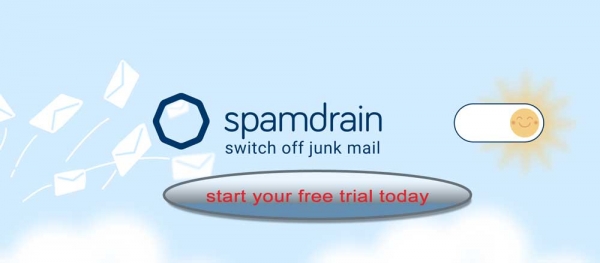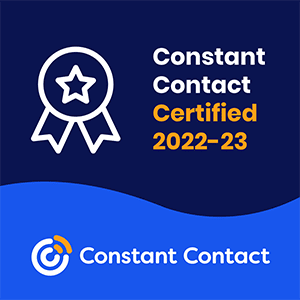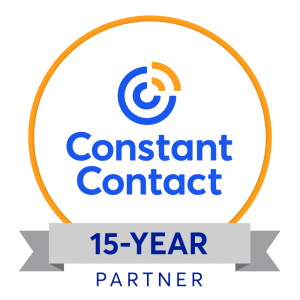Learn how to make word-of-mouth referrals a tactical part of your business growth and revenue strategy.
The saying goes that when you do what you love, you’ll never work a day in your life. But when your clients love what you do, you’ll find yourself in a position to unlock the most powerful form of marketing that exists: the word-of-mouth referral.
Word-of-mouth referrals can be difficult to generate, capture, and quantify, so perhaps it’s not surprising that most business owners aren’t focused on building up their word-of-mouth revenue streams.
But client referrals are a tremendously powerful source of leads and potential revenue. My partner and I built a successful digital agency exclusively through word-of-mouth referrals for years. And whether you manage a retailer or a service-based business, there are a number of compelling reasons that you should be leveraging referrals to grow your business as well.
Related: 3 Simple Steps to Grow Your Business Through Referrals
People overwhelmingly trust word-of-mouth referrals
According to Nielson, 83% of people trust word-of-mouth recommendations from friends and family while 92% of consumers trust word-of-mouth referrals more than all other forms of advertising.
Plus, data from Survey Monkey shows that consumers are five times more likely to make a big purchase on the basis of a trusted word-of-mouth recommendation than a paid ad.
They’re free
John Wannamaker once famously said, “Half the money I spend on advertising is wasted; the trouble is I don’t know which half.” We’ve all been there. That’s why part of the beauty of word-of-mouth referrals is that you won’t spend a dime on them.
They net better customers and clients
In my experience, new clients that come from referrals advance through the sales process faster, have more forgiving negotiations, and lean towards greater loyalty because you come recommended. On average, your referred customers will also spend twice as much as your non-referred customers, making them an incredibly desirable source of business from an LTV standpoint.
They reveal the value-add levers that are most important to your customers
Over the years, I’ve learned that more than knowledge, more than a privilege, more than even money, people tend to protect their relationships. When clients are willing to talk about your service and refer you to someone new, that means you’re really doing a great job of serving them.
And whenever you are referred, it’s a great opportunity to reflect on what your clients love so much about working with you. Is it your turnaround time? Your collaborative process? The network of relationships you bring to the engagement?
If you can identify the reasons you’ve been recommended, you can reinvest in those aspects of your practice and improve your service offerings for all of your clients. Improving your service offerings will in turn help you earn more referrals, which will grow your business and produce more opportunities to impress and improve.
Related: Customer Loyalty: Ten Ways to Earn More Repeat Buyers
Ultimately, that virtuous cycle is the reason you should treat customer referrals as your number one metric of success. Unlike your conversion rate, your YOY revenue, or any other quantitative KPI, referrals give you a qualitative view of what you’re doing extremely well right now and help you chart what you should do next to compound your success.
Four surefire tips to build more business through referrals
By now you get it — referrals are more effective than ads, totally free, yield more valuable clients and provide you with actionable data that will help you improve your entire organization. But how do you get them?
If you’re in direct-to-consumer retail, establish an online referral program and remarket it to your bottom-of-funnel audience with email, SMS, ads, website modals, and a top-nav link. You can build your own referral program from scratch or enlist a technology partner that specializes in online loyalty programs, like Stamped.io, Yotpo, or ReferralCandy.
If you offer a B2B service like digital marketing, earning referrals from existing clients will require time and finesse, but there are a number of things you can do to maximize your odds of netting more. Check out these four surefire tactics that will help you pull in more referral business:
1. Adopt a human-first business philosophy. Business is essentially a humanist enterprise. Transactions are a function of trust, but trust can never be maintained over the long term if you treat people transactionally.
To be worthy of referral, you must understand that your success is fundamentally intertwined with your clients’ success. That means being an honest communicator, taking maximum ownership when things go wrong and, above all, creating a work environment that fosters team success so that you can deliver that “wow” moment when it counts.
For some great insight into the business-boosting effects of treating your teammates as essential stakeholders, I recommend Setting The Table by restaurateur Danny Meyer.
2. Over-serve your clients. Want to know how CAA came to represent so much of Hollywood’s top talent? By making “above and beyond” part of their everyday practice. Their philosophy is that whenever they bring on a new client, that client is represented by the whole agency.
And CAA makes a habit of sweetening their services with outside-the-box value adds, like supporting the causes that their clients care about. Working with a client’s favorite charitable org isn’t a typical business activity. It’s an activity that makes CAA feel like more than a business.
Take a page from CAA and adopt a holistic, generous approach to working with clients: Allow your team to over-serve them when necessary. Bring the full range of your interdisciplinary resources to bear on client issues. Anticipate and address their needs before they ask.
By being a true partner to your clients on all levels, you cultivate the kind of appreciation that turns into word-of-mouth referrals down the road.

3. Turn wins into action with an NPS Survey. No matter how great your work is, most people won’t formalize their feedback without a nudge. The Net Promoter Score or NPS metric can provide both quantitative and qualitative data to help you understand whether you are successfully serving your customers and how likely they are to refer you.
There are two kinds of NPS: the transactional NPS, which asks your customers how likely they are to recommend your product or service to a peer, and the relational NPS, which asks your customers how satisfied they are overall with your product or service.
If you run an online retailer, you can implement a transactional NPS in a strategic place, like your post-purchase page or email flow. If you run a service business with a roster of long-term clients, administer a quarterly relational NPS survey to keep a beat on the health of your client relationships.
Because the NPS consists of a single question, you’ll get more participation than you would with a more time-intensive feedback request. Plus, taking steps to improve your NPS score will help you keep your clients happier and cause them to reflect on your value. And all of that will come into play the next time they’re asked to recommend a business in your niche.
4. Don’t solicit, elicit. Generally speaking, it’s not a wise practice to ask for referrals directly. NPS feedback? Yes. Testimonials? Sure — as long as the client is happy. But asking a current client to broker a new relationship on your behalf smacks of desperation, and you’ll quickly alienate your customers by treating them as stepping stones to new prospects.
The answer is to look for acts of generosity that bring high value to your clients’ lives. These simple acts will help keep your business top of mind when someone asks for a recommendation. There are all kinds of generous acts and low-investment favors, but some of my favorites are: brokering a useful introduction, reaching out with useful insights, or offering free beta access to a new business unit or service.
Over-serve your clients by demonstrating that you are thinking of new ways to add value to their business above and beyond your scope of work. Keep in mind that the key to this approach is to perform favors without expecting a quid pro quo. They’re about building cumulative goodwill and trust, not about cashing in. No, you won’t find accurate attribution statistics for this form of business building. And you probably won’t see immediate results the way you’d expect with a PPC campaign.
But if you’re serious about growing a business that can distinguish itself among a sea of competitors, turn customers into evangelists and net the kinds of clients you want to work with, you’ll align those goals with your day-to-day by treating client referrals as an essential metric of organizational health.
Related: 3 Social Media Hacks to Help Your Content Go Viral
This article was massaged with the World’s Best Grammar Checker.
*Purchases through some of the links on this site may provide the publisher with compensation.
Register to be notified when we post another helpful article.

Article by:
David Wagoner
Entrepreneur Leadership Network Contributor
Co-Founder and CMO of P3 Media
David Wagoner is a serial entrepreneur with a diverse background in technology, marketing, and creative solutions. He is the co-founder and CMO of P3 Media, a full-service digital marketing and eCommerce agency in NYC that accelerates growth for high-volume businesses and Fortune 500s.
























Leave A Comment
You must be logged in to post a comment.